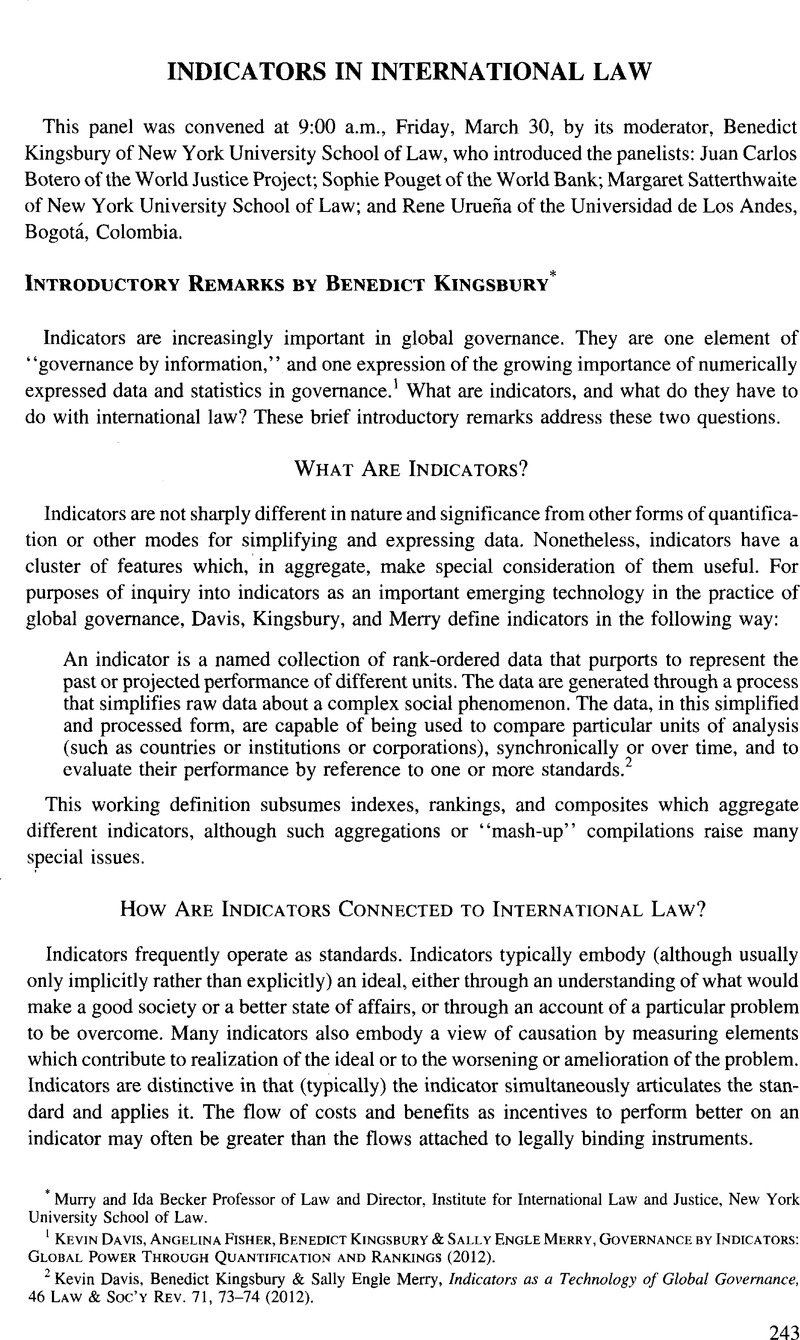No CrossRef data available.
Article contents
Introductory Remarks by Benedict Kingsbury
Published online by Cambridge University Press: 28 February 2017
Abstract

- Type
- Indicators in International Law
- Information
- Copyright
- Copyright © American Society of International Law 2012
References
1 Kevin Davis, Angelina Fisher, Benedict Kingsbury & Sally Engle Merry, Governance by Indicators: Global Power Through Quantification and Rankings (2012).
2 Davis, Kevin, Kingsbury, Benedict & Merry, Sally Engle, Indicators as a Technology of Global Governance, 46 Law & Soc’y Rev. 71, 73-74 (2012)CrossRefGoogle Scholar.
3 This includes self-appointed monitors, such as the mandating by U.S. legislation of the U.S. State Department to report in index form on trafficking in persons, under a set of standards comparable to the relevant international treaty standard but articulated slightly differently in the U.S. legislation.
4 T025/2004, Auto 116/2008, Auto 008/2009 (adopting indicators concerning realization of rights of internally displaced persons); T760/2008 and subsequent orders adopting indicators on realization of the right to health. See also Rodríguez-Garavito, César, Beyond the Courtroom: The Impact of Judicial Activism on Socio-Economic Rights in Latin America, 89 Tex. L. Rev. 1669 (2011)Google Scholar.


